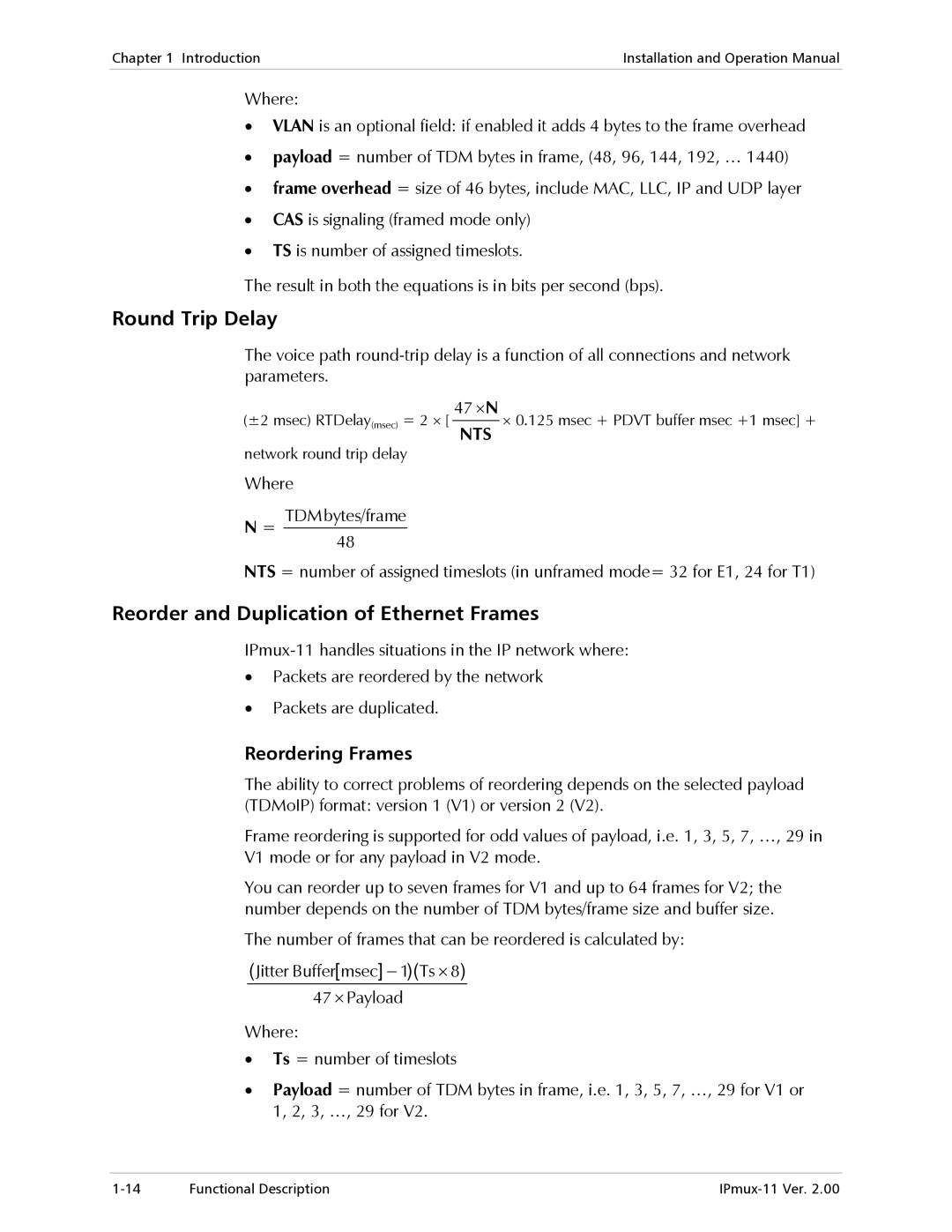
Chapter 1 Introduction | Installation and Operation Manual |
|
|
Where:
•VLAN is an optional field: if enabled it adds 4 bytes to the frame overhead
•payload = number of TDM bytes in frame, (48, 96, 144, 192, … 1440)
•frame overhead = size of 46 bytes, include MAC, LLC, IP and UDP layer
•CAS is signaling (framed mode only)
•TS is number of assigned timeslots.
The result in both the equations is in bits per second (bps).
Round Trip Delay
The voice path
47 ⋅N
(±2 msec) RTDelay(msec) = 2 ⋅ [ NTS ⋅ 0.125 msec + PDVT buffer msec +1 msec] + network round trip delay
Where
N = TDMbytes/frame 48
NTS = number of assigned timeslots (in unframed mode= 32 for E1, 24 for T1)
Reorder and Duplication of Ethernet Frames
•Packets are reordered by the network
•Packets are duplicated.
Reordering Frames
The ability to correct problems of reordering depends on the selected payload (TDMoIP) format: version 1 (V1) or version 2 (V2).
Frame reordering is supported for odd values of payload, i.e. 1, 3, 5, 7, …, 29 in V1 mode or for any payload in V2 mode.
You can reorder up to seven frames for V1 and up to 64 frames for V2; the number depends on the number of TDM bytes/frame size and buffer size.
The number of frames that can be reordered is calculated by: (Jitter Buffer[msec] − 1)(Ts ⋅ 8)
47 ⋅ Payload
Where:
•Ts = number of timeslots
•Payload = number of TDM bytes in frame, i.e. 1, 3, 5, 7, …, 29 for V1 or 1, 2, 3, …, 29 for V2.
Functional Description |
